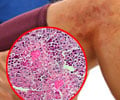Being able to predict whether a child’s asthma will be easy or difficult to control will help us provide a more personalized treatment approach.

‘Bronchodilator responsiveness, nasal inflammation and allergy were among the most significant baseline features that distinguished hard-to-control asthma in inner-city children and adolescents.’





Patients with hard-to-control asthma also had exacerbations peaking in the spring and fall, and more nighttime symptoms in the fall and winter.These findings from the Inner City Asthma Consortium study, funded by the National Institutes of Health (NIH), were published in the Journal of Allergy and Clinical Immunology.
“Our study found striking differences in how children with asthma respond to treatment, and these were associated with clinical factors that can be identified from the start,” said Jacqueline Pongracic, lead author, Head of Allergy and Immunology Division at Ann & Robert H. Lurie Children’s Hospital of Chicago and Professor of Pediatrics and Medicine at Northwestern University Feinberg School of Medicine. “Being able to predict whether a child’s asthma will be easy or difficult to control will help us provide a more personalized treatment approach.”
The study included 619 patients with asthma, six to 17 years old, from nine urban communities across the country, representing mainly African American and Latino populations. All children underwent standardized assessment and bimonthly guideline-based management visits over the course of one year.
Researchers examined 44 clinical features in a broad range of domains that were previously reported as potentially contributing to asthma severity and response to treatment. “One of the novel aspects of our study is that we evaluated children with asthma over an entire year, which allowed us to more accurately characterize their disease,” said Pongracic.
Advertisement
Allergy, especially to mold, was also an important feature of hard-to-control asthma. While children with easy-to-control asthma were able to progressively taper their medication requirements over the year, the hard-to-control asthma group could not, showing no improvement in lung function and seasonal worsening in symptoms. Adherence to asthma therapy was comparable in both groups.
Advertisement
Source-Newswise














